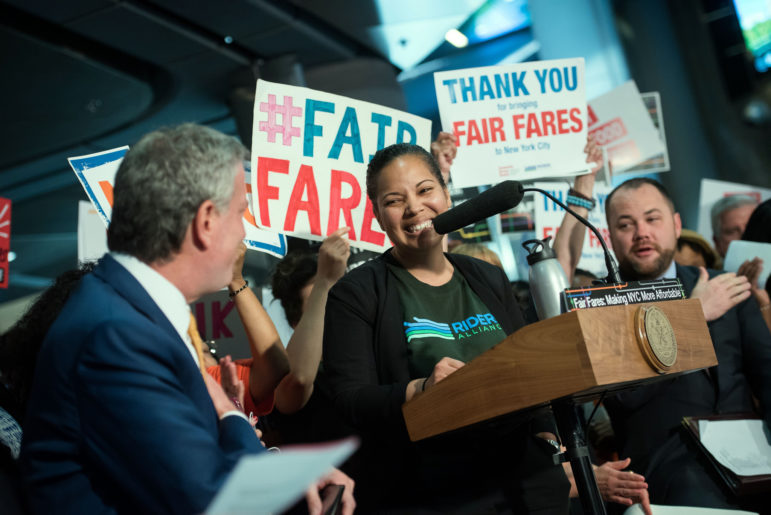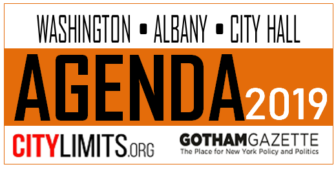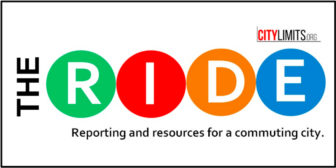
Adi Talwar
Advocates say the discounted MetroCards may also lead to fewer incidents of fare evasion.
In June, after more than two years of campaigning by advocates, activists and grassroots groups, the City Council and Mayor Bill de Blasio announced they’d struck a budget deal: one that included funding for the Fair Fares program, which would provide half-priced MetroCards to New Yorkers living below the federal poverty level.
The initiative, which experts say could potentially benefit as many as 800,000 low-income New Yorkers, is set to roll out in January, though the city has yet to release a detailed plan for how it will operate. Eligibility criteria, how many people the program will serve during its initial rollout, and exactly how participants will obtain their discounted MetroCards are all factors still being worked out, according to a spokeswoman for the mayor’s office.
One detail that we do know, revealed at an MTA committee meeting last week, is that the half-priced fares will only apply to the purchase of weekly and monthly MetroCards. Pay-Per-Ride MetroCards, which users can purchase and load with any amount of money over $5.50, are exempt from the discount, at least initially—something city officials say will allow them to get the program launched on time.
“The seven-day and 30-day options save money, provide flexibility for Fair Fares riders, and they allow us to get the program up and running faster than usual,” de Blasio spokeswoman Jaclyn Rothenberg says. “As we roll out the program, we’ll examine how the cards are being used and if changes make sense, we’ll make them.”
This news was a disappointment to transit advocates who’d pushed for the passage of Fair Fares, who argue that the city’s most cash-strapped New Yorkers are not always able to afford the upfront costs of a weekly or monthly MetroCard, even at a discount. Under Fair Fares, a 30-day MetroCard would cost $60.50 while a 7-day would cost $16.
“Many low-income New Yorkers cannot afford to shell out what it costs, even at half of a monthly MetroCard or a weekly. Sometimes they can, but they should have the option,” says Rebecca Bailin, political director at Riders Alliance, one of the groups that helped lead the charge to get Fair Fares passed.
A 2016 report by the Community Service Society found that low-income riders are more likely to use Pay-Per-Ride MetroCards to get around. Of the low-income, low-savings families the report surveyed—defined as those earning 200 percent or less of the federal poverty level, and with less than $100 in savings—20 percent said they most often purchase single ride MetroCards, while 18 percent said they most frequently buy monthly cards.
“It’s great that New York City is taking the lead on this. This program, though, cannot exist in full without [including a Pay-Per-Ride option],” Bailin says. “We fully expect and are, frankly, counting on the city to do what they promised.”
The MTA currently offers half-priced Pay-Per-Ride MetroCards to seniors and riders with disabilities, so the city should be able to easily offer the same for Fair Fares’ participants, argues Jon Orcutt, director of the nonprofit TransitCenter.
“They’re going cheap on it,” he says. “[De Blasio’s] still showing how much he begrudges the spending on it, which was always his thing.”
Indeed, the mayor had previously been reluctant to pony up funding for Fair Fares, first pushing—unsuccessfully—for a millionaire’s tax to pay for it. He later asserted that the city simply couldn’t afford the initiative. But activists campaigned hard for the program and were backed by City Council Speaker Corey Johnson, who made Fair Fares a focal point of his budget negotiations.
“Getting the de Blasio administration to even approve Fair Fares was an enormous fight,” says Hayley Richardson, communications association for TransitCenter. “Now we’re in a position where they’re doing it sort of half-heartedly.”
The final city budget included $106 million for the initiative, half of the $212 million Johnson had requested for it in his preliminary budget response. The funds are intended to cover the first year of the program, officials said.
In a statement, Johnson’s office did not directly respond to questions about the Pay-Per-Ride exemption, but reiterated that “Fair Fares is a major priority for the Council.”
“We are excited to get this up and running,” Council spokeswoman Breeana Mulligan says. “Details are still being worked out, and we look forward to working with the administration, the MTA and advocates to give discounted MetroCards to low-income New Yorkers and implement a plan that works for all.”
At its board meeting last week, the MTA approved a resolution authorizing an agreement with the city to launch Fair Fares at the start of the new year. While the city will handle the administration of the initiative, New York City Transit Vice President Tim Mulligan said the MTA will be “monitoring the program analytically” to see what impact it has on bus and subway ridership, both of which have been declining.
“We’re hopeful that this will bring new customers to the system and increase ridership,” he said.
Advocates say the discounted MetroCards may also lead to fewer incidents of fare evasion.
“I certainly think this program will help people who are forced to jump the turnstile because they have no other option,” says Jaqi Cohen, the campaign coordinator for the Straphangers Campaign, who says many of the city’s most vulnerable residents are forced to “risk arrest and risk getting a very expensive ticket just to get to work.”
The half-priced fares will also help ease the burden for those who are forced to make similar hard choices when it comes to getting around.
“People were skipping meals for a MetroCard, or not paying bills,” says Bailin. “Or choosing to walk really long distances, like across boroughs.”
In addition to Fair Fares, experts see other ways the city and the MTA could make its transit system more accessible in the future. One example is to institute fare capping, a policy in which the transit system tracks the number of trips each rider takes, and stops charging them after they exceed a certain number. This would level the playing field for those who can’t afford the upfront costs of a 7-day or 30-day MetroCard, but who can ultimately end up paying more than what those cards costs over the course of the month, just spread out over smaller payments.
“Higher income riders are being rewarded for high ridership,” Cohen explains.
In the coming years, the MTA plans to eliminate MetroCards and switch to a new payment system that uses electronic readers, technology that will allow for fare capping and similar policies to be easily put into action.
Fare policy is this really kind of untapped tool,” Richardson says. “The policies are really only limited in imagination to what we can do in terms of making the city more equitable.”

Ed Reed/Mayoral Photography Office.
June 2018: Mayor Bill de Blasio, Council Speaker Corey Johnson, other elected officials and subway riders attend a rally to celebrate Fair Fares funding in the Budget at the Fulton Street subway station.










5 thoughts on “Half-Priced MetroCard Program Will Launch in ’19, But With Limits”
The minimum wage in NYC will increase to $15/hour On January 1st, 2019. This means that people in NYC will be making OVER the federal poverty level. Already senior citizens and disabled folks are automatically eligible. So who will be eligible for the half-priced MetroCards?
I think the reason this mayor’s name comes so bitterly to my lips, is because I dreamed, I hoped he was the man he presented himself as. I guess it’s asking too much, to ask politicians to be honest about how they present themselves. He is, somehow weak – (why is he unable to make a simple tax on those who earn over a $1,000,000 and live in our city?) and also NOT an advocate for the poor and working people of our city. He’s taxed the citizenry and the yellow cab drivers — poor working people — driven to suicide some of them — (so painful to me) — he’s done that without a problem. Why not the super wealthy? How can he not get it, that people can’t afford to pay ahead for a monthly subway card?
I think that restricting seniors from using
metro cards during rush hours is totally
unfair. Some seniors HAVE to still work.
it’s a disgrace that older working people
cannot receive any of the benefits from a Senior Citizen Metrocard.
Hi my name is Charles Perez and Zi would like to know if the new Metrocard discount applies only to New York City or people that leaves in other locations like Westchester, Putnam ?
I’d like to know with the new system for the MTA will affect the fair fare metro cards